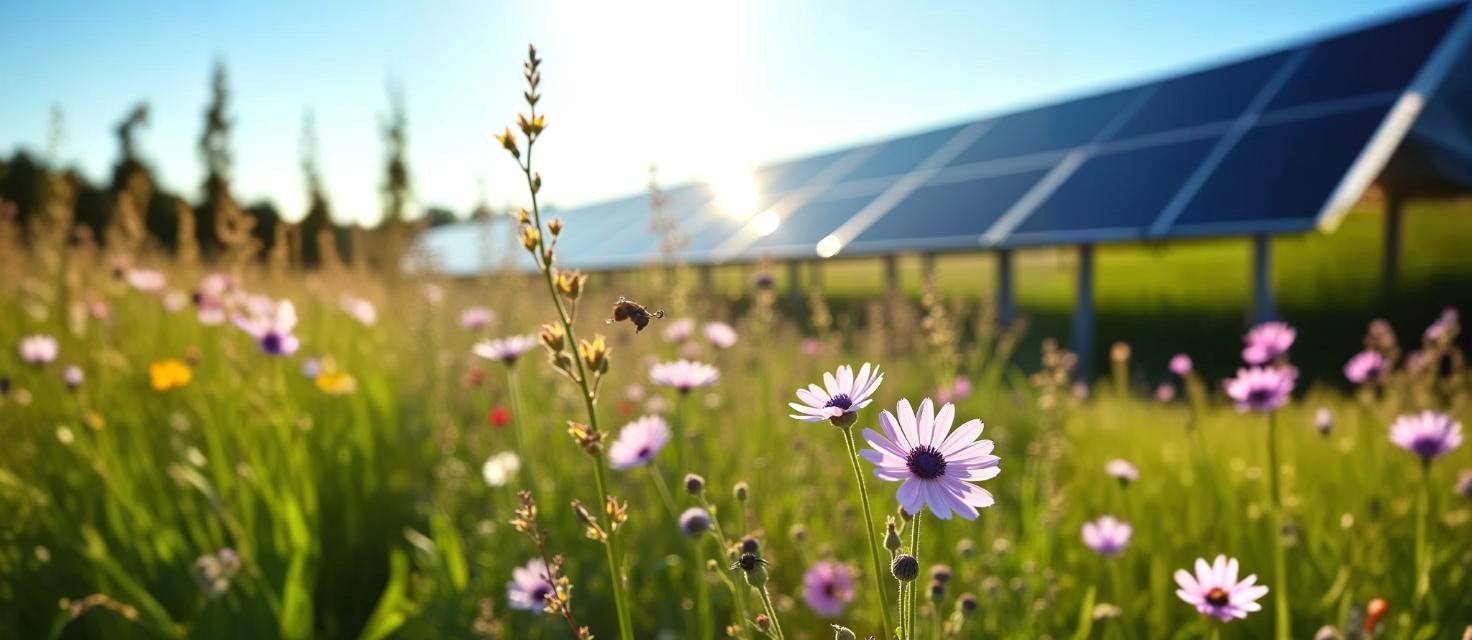Recent findings from a Solar Energy UK report examining public attitudes to utility scale project development suggest that, while overall support for solar projects is steadily increasing, there are still some areas where this support wavers.
This is no small matter for developers and planners. With the UK Government’s ambition to triple solar generation by 2030 and the industry pushing for a clean, flexible, and resilient energy system, ensuring that solar projects continue to be welcomed by communities is critical.
Overall, direct survey responses indicate that public support for solar energy remains robust and is steadily growing, with 77% of survey respondents stating they support the construction of solar farms in their local area—a figure that has increased by 4% compared to 2023. Similarly, 55% of respondents reported becoming more supportive of solar development over time, suggesting that familiarity with renewable energy infrastructure is generating trust and acceptance.
But the same report also reveals that some misconceptions persist, particularly regarding the environmental impact of solar farms, and their chosen locations. A significant portion of respondents still listed potential harm to biodiversity as a concern, despite strong and growing evidence to the contrary. Equally, only 10% of survey respondents recognised that the locations of solar projects are chosen based on the availability of grid connections. Both these elements highlight the importance of comprehensive and clear community engagement, by developers, during the project planning process.
Solar Farms and Biodiversity: A Reality Check
Concerns about biodiversity loss may have once been understandable prior to recent legislation, but in today’s policy and planning context, the onus is on developers of housing, energy and infrastructure to ensure species and habitat protection. Under current UK planning law, new solar developments are required to deliver a minimum of 10% Biodiversity Net Gain (BNG). In practice, many go further, providing, in some cases BNG exceeding 140%, demonstrating the potential of solar farms to play a proactive role in restoring and supporting local ecosystems
At ILOS Energy, our approach – surpassing basic legislative compliance – has always been to design projects with ecological stewardship in mind, enhancing pollinator habitats, planting native species, and incorporating ecological features such as wildflower meadows, hedgerows, and buffer zones.
Yet, to return to the challenge, regulation in this area isn’t widely known or understood among the general public. Educating communities on the ecological benefits of well-designed solar farms is, therefore, an incredibly important part of the planning consultation process.
Grid Connection: The Key Factor Behind Site Selection
Another area where understanding remains limited is the reason behind the location of solar farms. Many respondents in the survey indicated that they wanted solar farms “elsewhere”—away from where they live—but without necessarily recognising that solar project siting is not solely a matter of available land or solar irradiation.
Grid connectivity is a major constraint, and one of the most significant factors determining where a solar farm can be built. A solar project must be located close enough to an available, viable grid connection point in order to be commercially and technically feasible. As ILOS has previously highlighted, even when planning permission is granted, grid availability—or the lack of it—can delay or even halt a project.
This is another example of where more public communication is needed. Without explaining the realities of how and why solar farms are sited, developers risk facing opposition based more on reluctance for any type of local development, rather than engagement on the practicalities of site selection.
The Importance of Early and Ongoing Engagement
The challenge, then, is not simply building more solar—it’s building solar with the public on side. And that requires clarity, transparency, and proactive communication at every stage of the development process.
At ILOS Energy, we believe that early and ongoing engagement with the community is critical to the success of any project. We host public exhibitions and consultations from the very outset of our planning process, ensuring that local residents, landowners, and stakeholders have the opportunity to understand a project’s scope, timelines, and benefits. These events are not just information sessions—they’re spaces for genuine dialogue. We listen to local concerns, answer questions, and take feedback seriously.
In particular, we focus on communicating:
- The biodiversity enhancements a project will deliver
- Why a site was selected (especially in relation to grid connection)
- The long-term land use plan and decommissioning commitments
- The broader contribution the project makes to national energy security and climate goals
This kind of transparency builds trust—and trust leads to support.
A Solar Future Depends on Shared Understanding
The UK solar industry is entering a period of rapid expansion. With Government targets in place and technology costs continuing to fall, solar power is poised to be a cornerstone of the clean energy transition. However, its future also depends on community buy-in, which means dispelling myths, explaining decisions, and demonstrating benefits.
The findings in Solar Energy UK’s 2025 report show that we’re moving in the right direction. Public support is growing, and many people are becoming more comfortable with solar development in their area. But there’s still work to do—particularly in addressing biodiversity misconceptions and the realities of grid-led site selection.
At ILOS Energy, we’re proud to be part of that conversation. We take our role as communicators and educators just as seriously as our role as developers. Because for solar to thrive, the public must not just accept it—they must understand and believe in it.


